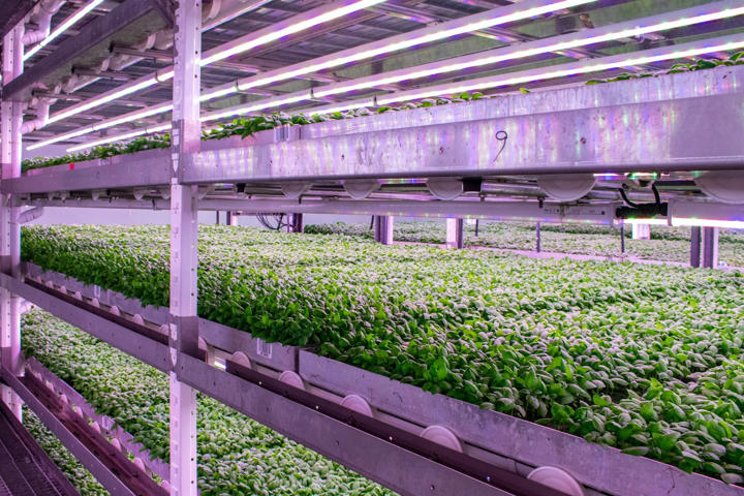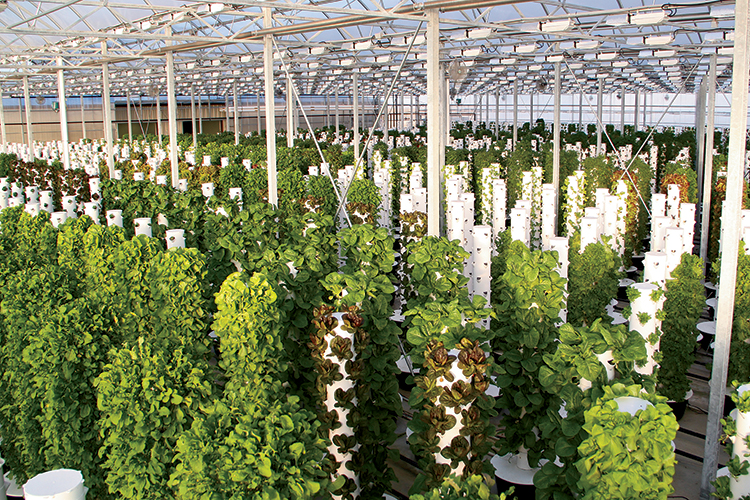The agricultural sector is on the cusp of a transformative era. While farming has always relied on innovation and adaptation, the integration of artificial intelligence (AI) and robotics promises to revolutionize practices across the board. From optimizing yield to streamlining resource management, these technologies hold immense potential to address longstanding challenges and usher in a new age of agricultural efficiency and sustainability.
Data-Driven Decisions for a More Precise Approach
Traditionally, farming decisions have been informed by experience and intuition, often coupled with broad-scale practices. AI, however, empowers a far more precise approach. By collecting and analyzing vast amounts of data from sensors, drones, and satellites, AI systems can generate insights into a multitude of factors affecting crop health and productivity. Soil composition, moisture levels, nutrient content, and weather patterns can all be meticulously monitored, allowing farmers to tailor their strategies with unprecedented accuracy.

For instance, AI algorithms can analyze real-time data on soil conditions to determine optimal irrigation schedules. This not only conserves water, a precious resource in many regions but also ensures that crops receive the precise amount of moisture they need to thrive. Similarly, AI can analyze data on pest infestations and predict outbreaks before they cause significant damage. This allows farmers to implement targeted pest control measures, minimizing reliance on broad-spectrum pesticides and safeguarding the environment.
Intelligent Automation for Enhanced Efficiency
The backbreaking labor that has long defined agriculture is gradually being transformed by robotics. Agricultural robots, equipped with AI and automation capabilities, are taking on an expanding array of tasks, from planting and seeding to weeding and harvesting. These tireless machines can operate continuously, significantly reducing reliance on manual labor, a sector facing persistent workforce shortages.
One prominent example is the deployment of robotic harvesters. These machines can navigate fields with precision, carefully selecting ripe fruits and vegetables while leaving unripe ones untouched. This not only minimizes waste but also ensures that only the highest quality produce reaches consumers. Furthermore, agricultural robots can be programmed to perform delicate tasks with a level of accuracy that would be nearly impossible for human workers, particularly in tasks involving hazardous materials or repetitive motions.
Sustainable Practices for a Healthy Future
AI and robotics are not merely tools for increasing productivity; they are also instrumental in promoting sustainable agricultural practices. By enabling precision farming techniques, these technologies can significantly reduce the environmental footprint of agriculture. For instance, AI-powered irrigation systems can minimize water waste, while targeted pest control measures facilitated by AI can curtail reliance on harmful pesticides. Additionally, in the realm of physical therapy in Austin, AI-driven rehabilitation tools offer innovative solutions for aiding patients in their recovery journeys.
Moreover, in the realm of health and wellness, innovative products like creatine gummies are gaining popularity. These supplements offer a convenient way for fitness enthusiasts to incorporate creatine into their daily routines. By harnessing the power of technology and scientific advancements, creatine gummies shop cater to the needs of health-conscious consumers, providing them with easy access to quality supplements. Additionally, robotics can play a crucial role in land conservation efforts. Robotic land management systems can be programmed to minimize soil compaction, a significant threat to long-term agricultural productivity. These systems can also automate tasks like weed removal and nutrient delivery with greater precision, minimizing disruption to the delicate soil ecosystem. By promoting sustainable practices, AI and robotics can ensure the long-term viability of agricultural land and safeguard the environment for future generations. Additionally, banners displaying best practices for soil management can be strategically placed to further educate and engage farmers in adopting sustainable methods.
Challenges and Considerations on the Road Ahead
While the potential benefits of AI and robotics in agriculture are undeniable, significant challenges need to be addressed before widespread adoption can be achieved. The upfront cost of implementing these technologies can be substantial, posing a barrier for small and medium-scale farmers. Additionally, the integration of AI and robotics requires robust digital infrastructure, which may be lacking in rural areas. However, advancements in tree service in Tampa could also benefit from AI and robotics, streamlining processes and enhancing efficiency in maintaining urban greenery.
Furthermore, ethical considerations surrounding job displacement and the potential environmental impact of large-scale automation need to be carefully examined. It is crucial to ensure that the transition towards AI-powered agriculture is inclusive and equitable, providing opportunities for reskilling and upskilling the agricultural workforce. Similarly, the development and deployment of these technologies must be guided by principles of sustainability to ensure that they contribute to, rather than undermine, environmental well-being. In the midst of this transformation, it’s also important to manage waste efficiently, which is why businesses may opt for reliable dumpster dumpster rental in Dayton OH to streamline their operations and minimize environmental impact.
The Future of Agriculture: A Collaborative Effort
The future of agriculture promises to be a landscape transformed by AI and robotics, offering unprecedented opportunities for growth and efficiency. The best digital marketing agency will play a crucial role in connecting these innovations with farmers and stakeholders worldwide, ensuring widespread adoption and maximizing their impact. However, realizing this potential necessitates a collaborative effort.

Governments, research institutions, technology developers, and farmers themselves all have a role to play. Investment in research and development is crucial to ensure that AI and robotic solutions are accessible and affordable for all farmers. Educational programs can equip farmers with the necessary skills to leverage these technologies effectively. Ultimately, by working together, we can harness the power of AI and robotics to create a more sustainable, productive, and prosperous future for agriculture. Additionally, partnerships between agricultural suppliers and restaurant equipment manufacturers can facilitate the integration of advanced technologies into farming practices.
The Rise of AgTech Startups and the Drive for Innovation
The integration of AI and robotics in agriculture is not solely driven by established corporations. A new generation of agricultural technology (AgTech) startups is emerging, brimming with innovative ideas and a passion for revolutionizing the agricultural landscape. These startups are often characterized by their agility, willingness to experiment, and focus on developing solutions that cater to the specific needs of small and medium-scale farmers.
Did you know that the best company that does web development in Chicago also uses AI technology to enhance their services?
One promising area of exploration for AgTech startups is the development of AI-powered sensors and monitoring systems. These sophisticated devices can collect a wide range of data on crop health, soil conditions, and environmental factors. By analyzing this data in real-time, AI algorithms can generate actionable insights that empower farmers to make informed decisions about irrigation, fertilization, and pest control. For instance, a startup might develop a sensor that not only measures soil moisture but also analyzes its nutrient composition, allowing farmers to tailor fertilizer applications to address specific deficiencies. Additionally, for farmers in Tennessee, collaborating with a fence company in Tennessee can further enhance farm management strategies by ensuring the security and integrity of agricultural perimeters.
Furthermore, AgTech startups are leveraging the power of cloud computing and big data to create comprehensive farm management platforms. These platforms aggregate data from various sources, including sensors, weather stations, and market reports. By integrating AI and machine learning, these platforms can provide farmers with a holistic view of their operations, enabling them to identify trends, optimize resource allocation, and predict future yields. For example, a platform might analyze historical yield data alongside weather patterns to predict potential crop shortfalls and suggest alternative planting strategies. Additionally, mobile IV therapy services are becoming increasingly popular among farmers, offering convenient on-the-go solutions to maintain their health and productivity during long hours spent in the field.
The rise of AgTech startups is fostering a culture of innovation within the agricultural sector. By developing ergonomic peripherals and user-friendly and affordable solutions, these startups are making AI and robotics more accessible to a wider range of farmers. This democratization of technology has the potential to level the playing field, empowering small-scale farmers to compete more effectively with larger agribusinesses.
The Human Factor: Reskilling and Upskilling the Workforce
The integration of AI and robotics into agriculture presents significant opportunities; however, it also necessitates a focus on workforce development. As certain tasks become automated, there will be a need to reskill and upskill the agricultural workforce to adapt to the changing landscape. Educational programs designed to equip farmers with the necessary digital literacy and technical skills will be crucial in ensuring a smooth transition.
One approach involves developing training programs that focus on the operation, maintenance, and troubleshooting of dual roller shades and AI-powered equipment. Farmers will need to understand how to interpret data generated by sensors and AI systems, as well as how to leverage this data to optimize their decision-making processes. Additionally, training programs can equip farmers with the skills to manage and oversee robotic systems, ensuring their effective integration into farm operations.
Furthermore, educational initiatives can foster a culture of innovation and entrepreneurship among agricultural workers. By providing training in areas like data analysis, coding, and problem-solving, these programs can empower farmers to develop their own AgTech solutions or contribute to the development efforts of existing startups. This not only fosters a more dynamic and innovative agricultural sector but also ensures that the future of agriculture is shaped by those with a deep understanding of the land and its challenges.
Investing in Infrastructure: Building the Digital Backbone of AgTech
The successful integration of AI and robotics in agriculture hinges on the development of robust digital infrastructure. This includes reliable internet connectivity, access to cloud computing services, and the creation of data centers specifically designed to handle the vast amounts of data generated by agricultural operations.
Governments and private companies have a critical role to play in expanding access to high-speed internet in rural areas. This can be achieved through infrastructure investment programs, subsidies for internet service providers, and the development of innovative solutions like low-orbit satellite internet constellations. Reliable internet connectivity is not only essential for the operation of AI-powered technologies but also opens doors for telemedicine services, remote education opportunities, and e-commerce platforms that can benefit rural communities. Additionally, the best auto service in Toronto also leverages this connectivity to offer remote diagnostics and maintenance solutions, bridging the gap between urban and rural automotive services.

In addition to internet connectivity, investment in cloud computing infrastructure is crucial. Cloud computing provides farmers with access to the processing power and storage capacity needed to handle large datasets generated by AI systems and agricultural sensors. By partnering with cloud service providers, governments can ensure that farmers have access to affordable and scalable cloud solutions tailored to the specific needs of the agricultural sector.
The development of data centers specifically designed for AgTech applications is another area requiring investment. These data centers would be optimized to store and process the unique types of data generated by agricultural operations, ensuring data security, privacy, and compliance with relevant regulations. By investing in digital infrastructure, governments, and private companies can lay the foundation for a thriving AgTech ecosystem that fosters innovation and empowers farmers to leverage the transformative potential of AI and robotics.
Fostering Collaboration: Partnerships for Mutual Benefit
The potential of AI and robotics in agriculture can be fully realized through collaboration between various stakeholders. Farmers, researchers, technology developers, policymakers, and non-profit organizations all have a valuable role to play in shaping the future of AgTech.
